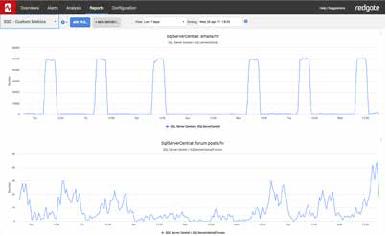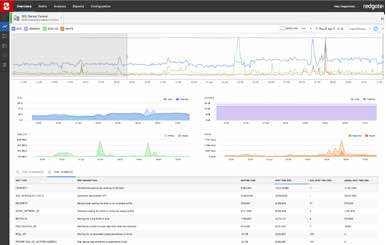Metrics install automatically if you have Redgate Monitor installed.
If you are using Redgate’s SQL Server monitoring tool, Redgate Monitor, you can instantly install and run this metric on your servers.
Explanation: This is a general indicator of performance problems. High stall times indicate I/O problems, which can be attributed to busy physical disks or queries that return large data sets to the client.
Guideline values: The ideal value for this metric should be less than 100, but this is just a rule-of-thumb. Higher values may be acceptable for your organization.
Check also:
- Disk avg. read time
- Disk avg. write time
- Avg. disk queue length
Possible solutions:
IO Stalls are affected by three possible factors:
- poorly performing disk subsystem (such as a misconfigured SAN)
- poorly defined queries
- overloaded disks (“data bursts”)
Solutions may involve allocating new hardware resources in addition to performance tuning of individual queries.
More information:
Troubleshooting SQL Server I/O requests taking longer than 15 seconds – I/O stalls & Disk latency
Metric definition
Name
Average IO stalls
Description
Explanation: This is a general indicator of performance problems. High stall times indicate I/O problems, which can be attributed to busy physical disks or queries that return large data sets to the client. Guideline values: The ideal value for this metric should be less than 100, but this is just a rule-of-thumb. Higher values may be acceptable for your organization. Check also:
- Disk avg. read time
- Disk avg. write time
- Avg. disk queue length
- poorly performing disk subsystem (such as a misconfigured SAN)
- poorly defined queries
- overloaded disks (“data bursts”)
Solutions may involve allocating new hardware resources in addition to performance tuning of individual queries.
More information:Troubleshooting SQL Server I/O requests taking longer than 15 seconds - I/O stalls & Disk latency
The T-SQL query that will collect data
Instances to collect from
Select all
Databases to collect from
0
Collection frequency
60
Use collected or calculated values
Leave the Use a calculated rate of change between collections check box unchecked
Metric collection
Enabled
Alert definition
An alert is not required
 58,078
58,078 
